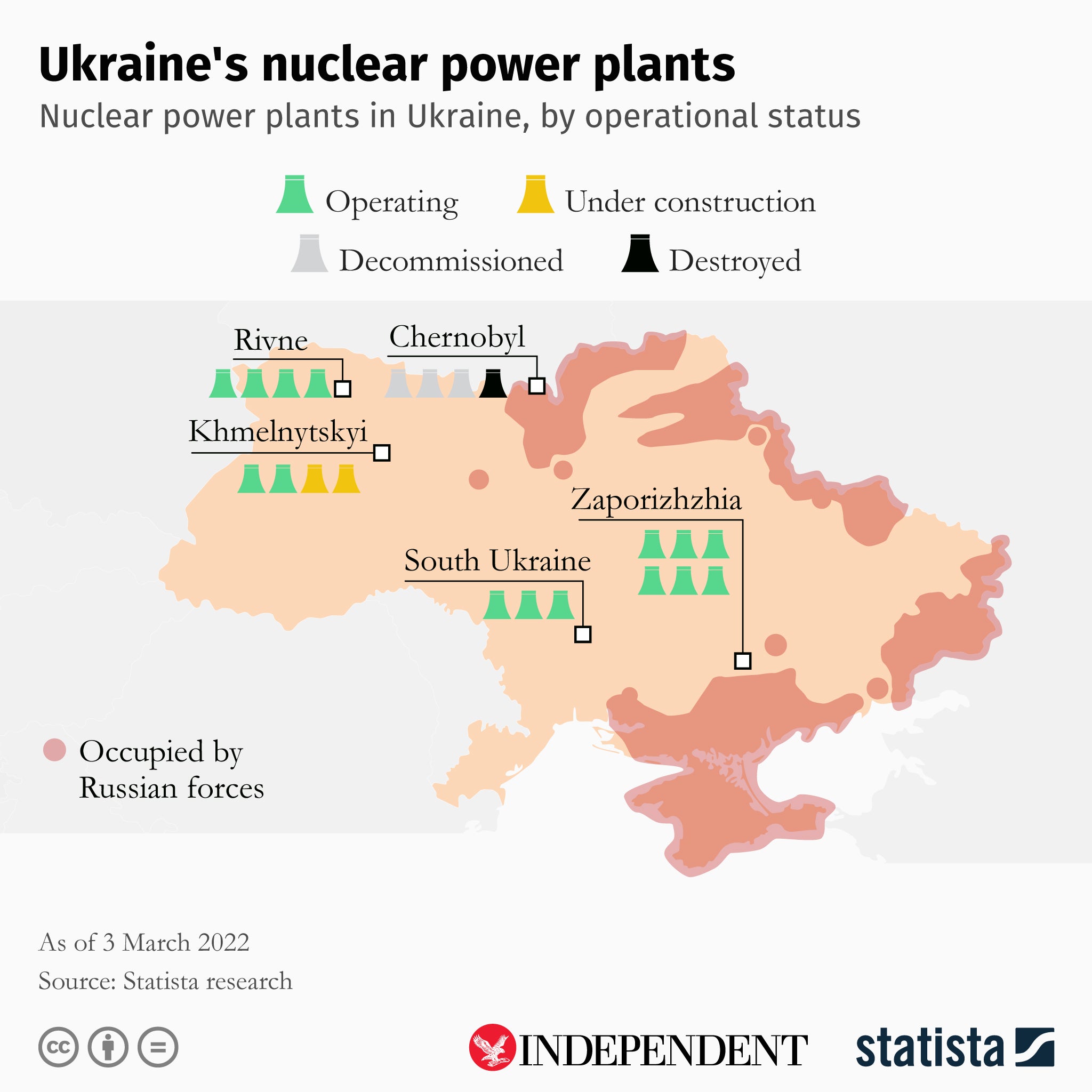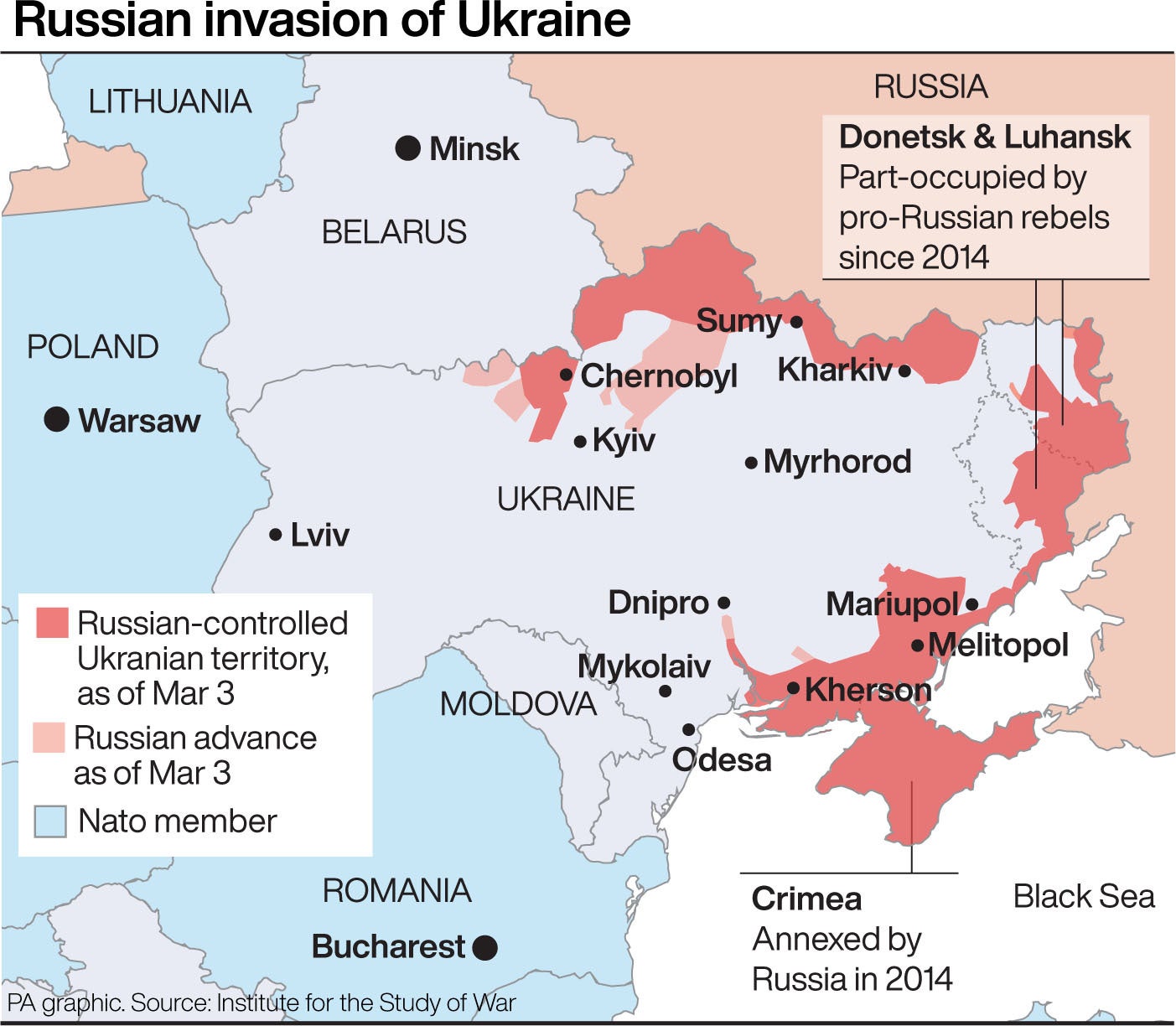Europe should ramp-up nuclear and renewables to wean off Russian fossil fuels, influential energy group says
The International Energy Agency’s strategy would further reduce the EU’s reliance on Russian supplies by over a third while supporting the European Green Deal to tackle the climate crisis
Your support helps us to tell the story
From reproductive rights to climate change to Big Tech, The Independent is on the ground when the story is developing. Whether it's investigating the financials of Elon Musk's pro-Trump PAC or producing our latest documentary, 'The A Word', which shines a light on the American women fighting for reproductive rights, we know how important it is to parse out the facts from the messaging.
At such a critical moment in US history, we need reporters on the ground. Your donation allows us to keep sending journalists to speak to both sides of the story.
The Independent is trusted by Americans across the entire political spectrum. And unlike many other quality news outlets, we choose not to lock Americans out of our reporting and analysis with paywalls. We believe quality journalism should be available to everyone, paid for by those who can afford it.
Your support makes all the difference.Vladimir Putin's war with Ukraine has shone a spotlight on the European Union's heavy reliance on fossil fuels from Russia.
Last year, Europe imported 40 per cent of its total gas consumption from Russia, along with a quarter of its oil.
Russia derives much of its income from these natural resources. Almost two-thirds of Russian exports are from the oil and gas sector, with fossil fuels contributing 39 per cent to the federal budget revenue.
Countries around the world have already imposed a series of sanctions on Russia and oligarchs close to Putin’s regime over the invasion. Among them is the suspension of the new Nord Stream 2 gas pipeline to Europe which climate experts say could trigger greater investment in clean energy across the bloc.
Now the International Energy Agency (IEA), the influential Paris-based group, has laid out a 10-point plan to further reduce the EU’s reliance on Russian supplies by over a third. The strategy also supports the European Green Deal to tackle the climate crisis by cutting greenhouse gas emissions, largely caused by burning fossil fuels.
While the plan centres on the drawdown of oil and gas capacity and accelerating the deployment of renewables like wind and solar projects, the IEA also backs using more nuclear power.
The recommendation may come as controversial, particularly during a conflict where the nuclear threat has been heightened by Russian actions.
Putin’s forces attacked and captured the Zaporizhzhia facility, Europe’s largest nuclear power plant, in the early hours of Friday, according to Ukrainian authorities.
During the attack, a Russian projectile caused a fire in one of the plant’s buildings. However it did not damage any of the reactors, the International Atomic Energy Agency said, adding that radiation levels appeared normal.
The IEA’s 10-point plan is laid out below.
1. No new gas supply contracts with Russia
Many of the EU's contracts with Gazprom, a majority state-owned gas company in Russia, are set to expire by the end of the year.
These deals equated to around 12 per cent of the company’s gas supplies to the EU in 2021.
The soon-to-expire contracts provide "the EU with a clear near-term window of opportunity to significantly diversify its gas supplies and contracts towards other sources, leveraging the options for imports provided by its large LNG and pipeline infrastructure."
2. Replace Russian supplies
The EU should seek to replace Russian supplies with gas from alternative sources. "The EU has greater near-term potential to ramp up its liquefied natural LNG imports, considering its ample access to spare re-gasification capacity," the IEA says.
In the near-term, the EU should rely on supplies for other importers, most notably in Asia, the energy forum says.

3. Introduce minimum gas storage obligations
Gas storage plays a key role in meeting swings in seasonal demand, and providing insurance against unexpected events such as surges in demand or shortfalls in supply that cause price spikes, the IEA says.
The value of the security provided by gas storage is even greater at a time of geopolitical tensions.
Therefore, the IEA adds, the EU should look to increase capacity in its gas storage.
4. Accelerate the deployment of new wind and solar projects
"In 2022, record additions of solar [PhotoVoltaic] and wind power capacity and a return to average weather conditions are already expected to increase the EU’s output from these renewable sources by over 100 terawatt-hours (TWh), a rise of more than 15 per cent compared with 2021," the IEA says.
The forum calls for governments to fast-track new clean energy projects, estimating that if it did so, it would increase renewable capacity by 20 per cent.
In simple terms, using more renewable power over gas will reduce dependence on Russia, and also move the EU closer to its climate targets.
5. Use more nuclear power
Maximising nuclear power will reduce Europe’s reliance on gas, the IEA recommends.
"Nuclear power is the largest source of low emissions electricity in the EU, but several reactors were taken offline for maintenance and safety checks in 2021," the IEA says.
"Returning these reactors to safe operations in 2022, alongside the start of commercial operations for the completed reactor in Finland, can lead to EU nuclear power generation increasing by up to 20 TWh in 2022."

6. Enact short-term measures to shelter vulnerable consumers from high prices
Increases in electricity costs are somewhat unavoidable when gas prices are high, the IEA says.
But current wholesale markets create the potential for profits for many electricity generators and parent companies that are well in excess of the costs related to operations.
Current market conditions could lead to excess profits of up to €200bn (£165bn) in the EU for gas, coal, nuclear, hydropower and other renewables in 2022.
"Temporary tax measures to raise rates on electricity companies’ windfall profits could be considered," the IEA suggests.
"These tax receipts should then be redistributed to electricity consumers to partially offset higher energy bills. Measures to tax windfall profits have already been adopted in Italy and Romania in 2022."
7. Speed up the replacement of gas boilers with heat pumps
Doubling the current installation rates of heat pumps will see a significant drawdown on gas use within the first year, IEA says, requiring additional investment of €15bn.
"A shift from gas to electricity for heating buildings could have the corresponding effect of pushing up gas demand for power generation, depending on the situation," the IEA says.
"However, any increase would be much lower than the overall amount of gas saved. Such a shift would also transfer seasonal swings in demand from the gas market to the power market."
8. Accelerate energy efficiency improvements in buildings and industry
At present, only about 1 per cent of the EU’s building stock is renovated each year.
The bloc should work to almost double this amount, the IEA says, “targeting the least efficient homes and non-residential buildings... mainly via improved insulation”.
Not only would it reduce the amount of gas needed to heat buildings, it would also create jobs.
However the IEA underlines that it “would require parallel efforts to improve supply chains for materials and workforce development".
9. Encourage a temporary thermostat adjustment by consumers
The average temperature for buildings’ heating across the EU at present is above 22C.
Adjusting the thermostat would deliver immediate annual energy savings, while also bringing down energy bills.
10. Step up efforts to diversify and decarbonise sources of power system flexibility
Scale up alternative forms of flexibility in Europe’s power system, the IEA says. For the moment, gas is the main source of that flexibility.
"Governments therefore need to step up efforts to develop and deploy workable, sustainable and cost-effective ways to manage the flexibility needs of EU power systems," the IEA says.
The options needed include enhanced grids, energy efficiency, increased electrification, and various large-scale and long-term energy storage technologies like batteries.




Join our commenting forum
Join thought-provoking conversations, follow other Independent readers and see their replies
Comments